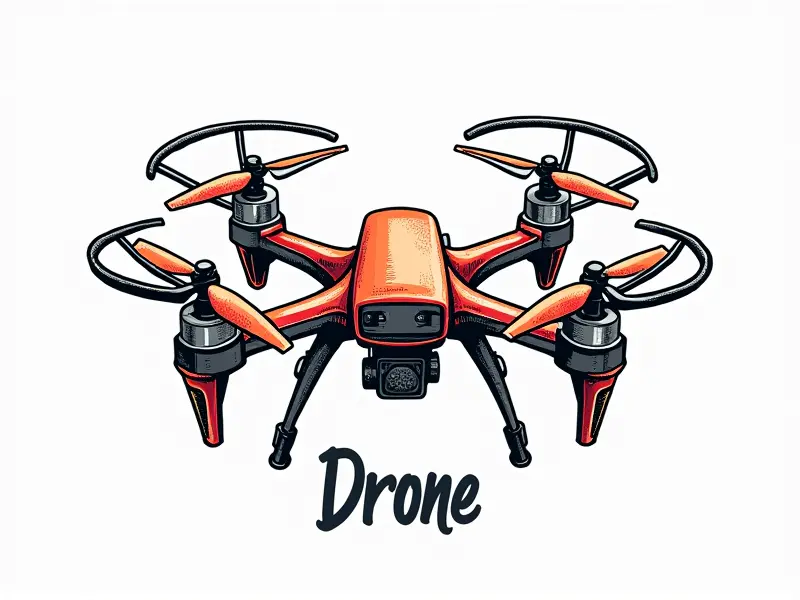How to tune a gyro on heli?

Mastering Heli Gyro Setup in Minutes
Tuning a gyro on your remote control (RC) helicopter is crucial for achieving smooth and stable flight. A properly tuned gyro ensures that your heli responds accurately to your inputs, making it easier to maneuver and fly with precision. This article will guide you through the process of setting up your RC helicopter's gyro effectively.
Quick Guide: Perfect Your Heli Gyro Setup
The first step in mastering your heli gyro setup is understanding its basic functions. A gyro stabilizes the helicopter by counteracting unwanted movements, such as roll and pitch. Here’s a quick guide to help you get started:
- Install the Gyro Correctly: Ensure that the gyro is securely mounted in your heli's frame.
- Connect the Servos Properly: Connect the roll and pitch servos to the appropriate channels on the gyro.
- Power Up Your Heli: Turn on your transmitter and receiver, then power up your helicopter.
Achieving Smooth Flight: Heli Gyro Setup
To achieve smooth flight, you need to fine-tune the gyro settings. Here are some key steps:
- Calibrate the Gyro: Follow the manufacturer’s instructions for calibrating your specific model.
- Adjust Sensitivity Settings: Start with a low sensitivity setting and gradually increase it until you find the optimal balance between responsiveness and stability.
- Test in Flight: Take your heli out to test its performance. Make adjustments as needed based on how it handles during flight.
Tips for Fine-Tuning Your RC Heli Gyro
Fine-tuning your gyro can significantly improve the overall flying experience. Here are some tips:
- Start with Basic Adjustments: Begin by adjusting basic settings like sensitivity and gain.
- Use a Stable Surface: Ensure that you have a stable surface for testing your heli before flight.
- Monitor Flight Performance: Keep an eye on how the heli performs during different maneuvers to identify areas needing improvement.
Optimize Your Heli's Stability with Gyro Tuning
To optimize your helicopter’s stability, focus on these key aspects of gyro tuning:
- Balance Roll and Pitch: Ensure that the roll and pitch settings are balanced to prevent over-correction.
- Increase Stability in Windy Conditions: Adjust the gain and sensitivity for better stability when flying in windy conditions.
- Improve Response Time: Fine-tune the response time of your gyro to achieve quicker and more precise control.
Essential Techniques for Heli Gyro Adjustment
Mastery over heli gyro adjustment requires understanding several essential techniques:
- Sensitivity Adjustments: Learn how different sensitivity levels affect your heli’s performance.
- Gyro Gain Settings: Understand the impact of gain settings on stability and responsiveness.
- Dynamic Testing: Test your heli in various flight conditions to ensure optimal performance.
How to Calibrate a Heli Gyro Perfectly
Calibrating your gyro correctly is crucial for achieving the best results. Follow these steps:
- Power Up Your System: Ensure that both your transmitter and receiver are powered on.
- Follow Manufacturer Instructions: Refer to the manual provided by the gyro manufacturer for specific calibration procedures.
- Check Calibration Indicators: Look out for any indicators or lights that signal successful calibration.
Step-by-Step Guide to Tuning Your Helicopter Gyro
Tuning your heli gyro involves several steps. Here’s a detailed guide:
- Install and Connect the Gyro: Properly install the gyro in your helicopter and connect it to the servos.
- Power Up Your System: Turn on both the transmitter and receiver, then power up your heli.
- Calibrate the Gyro: Follow the calibration process as outlined by the manufacturer.
- Adjust Sensitivity Settings: Start with low sensitivity settings and gradually increase them for optimal performance.
- Test in Flight: Take your heli out to test its stability and responsiveness during flight.
The Art of Adjusting Helicopter Gyros
Mastery over adjusting helicopter gyros is an art that requires patience, practice, and a keen eye for detail. Here are some advanced tips:
- Understand the Impact of Environmental Factors: Be aware of how temperature and humidity can affect gyro performance.
- Experiment with Different Settings: Try various sensitivity and gain settings to find what works best for your flying style.
- Seek Feedback from Experienced Pilots: Learn from the experiences of more seasoned pilots who have mastered gyro tuning.
Achieving Stable Flights: Heli Gyro Setup
To achieve stable flights, focus on these key aspects of your heli gyro setup:
- Balance Roll and Pitch: Ensure that the roll and pitch settings are balanced to prevent over-correction.
- Increase Stability in Windy Conditions: Adjust the gain and sensitivity for better stability when flying in windy conditions.
- Improve Response Time: Fine-tune the response time of your gyro to achieve quicker and more precise control.
Troubleshooting Common Issues with Heli Gyros
If you encounter issues during gyro setup, here are some common problems and their solutions:
- Unstable Flight: Check your sensitivity settings and ensure that the roll and pitch are balanced.
- Lagging Response: Increase the gain setting to improve responsiveness. If this doesn’t help, consider replacing faulty components.
- Battery Issues: Ensure that all batteries are fully charged before attempting calibration or flight tests.
In conclusion, mastering your RC helicopter gyro setup is essential for achieving smooth and stable flights. By following the steps outlined in this guide, you can fine-tune your heli’s performance to match your flying style and preferences. Remember that practice makes perfect, so keep experimenting with different settings until you find what works best for you.

